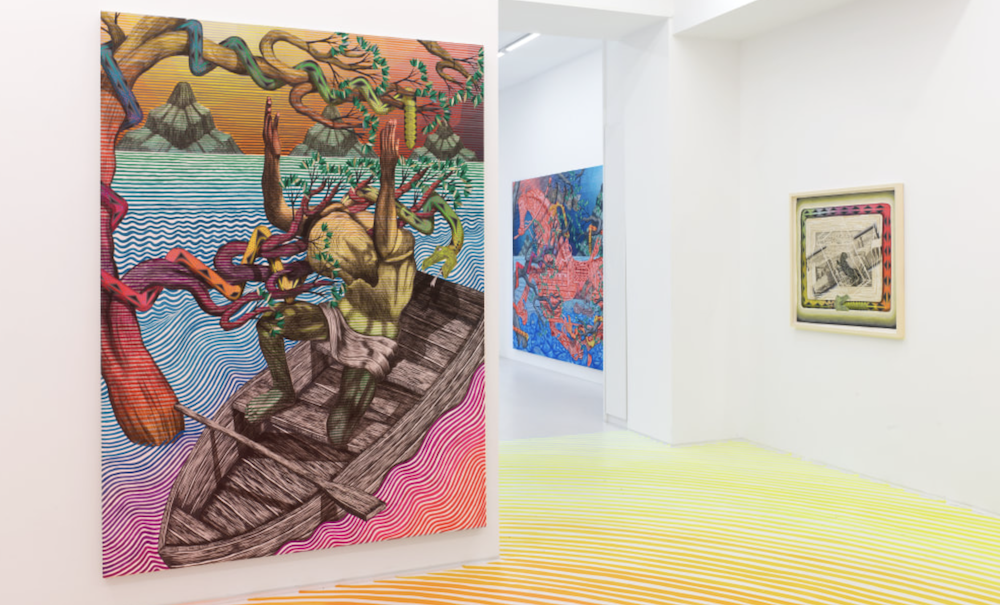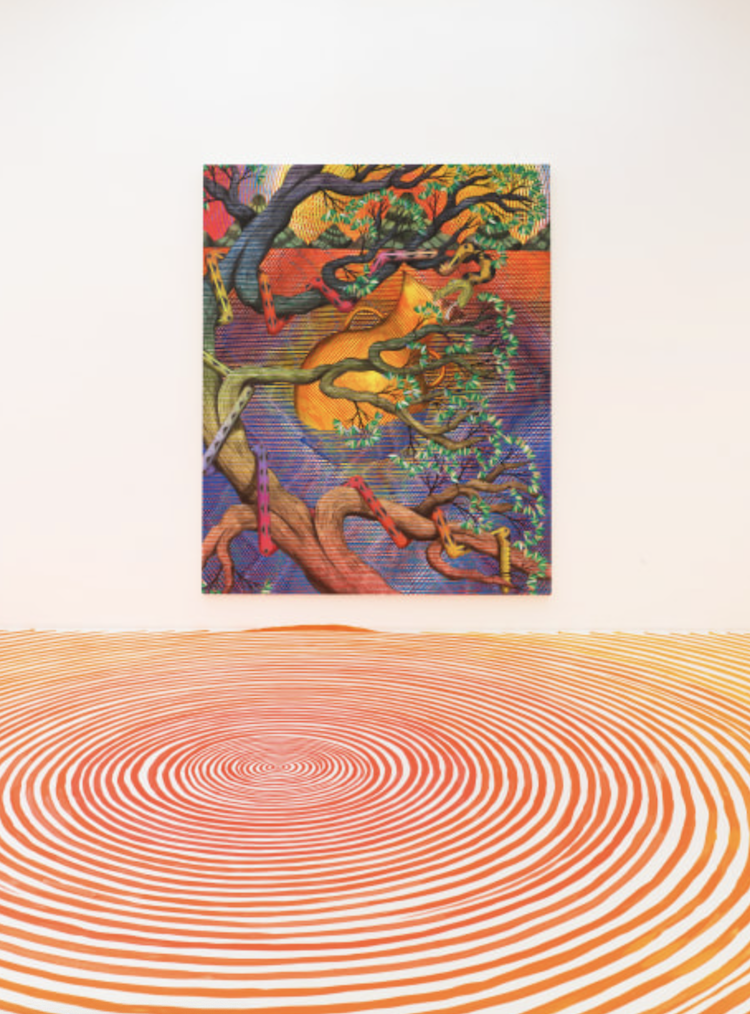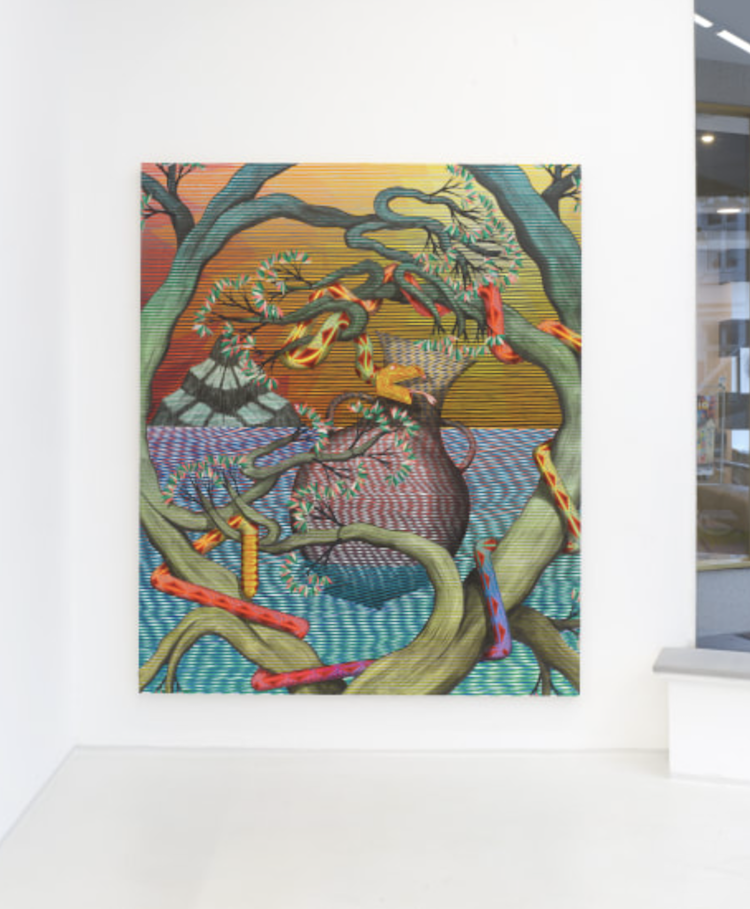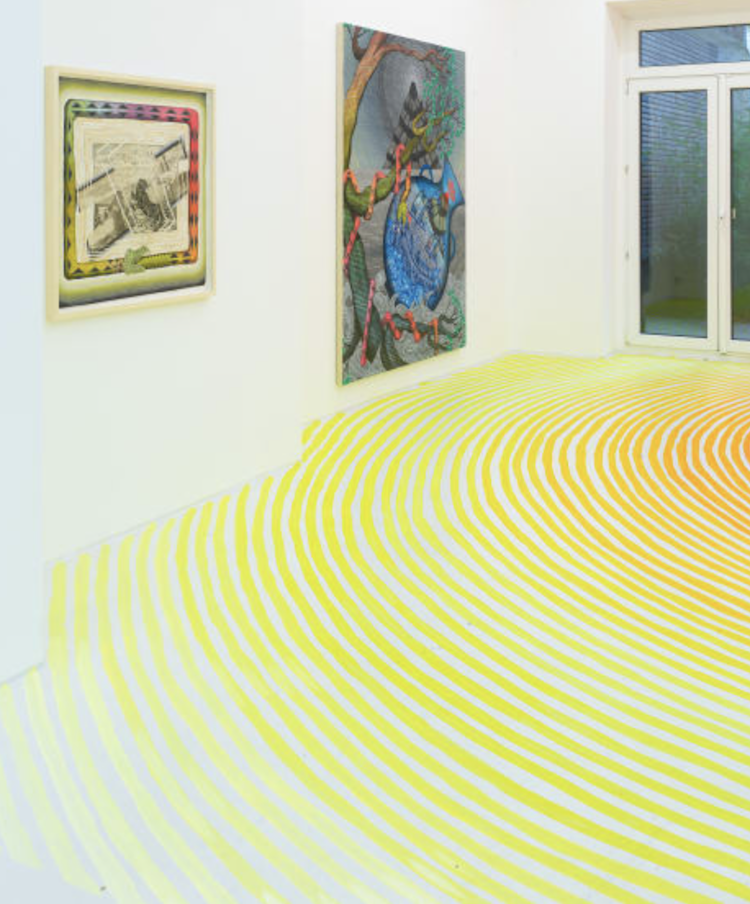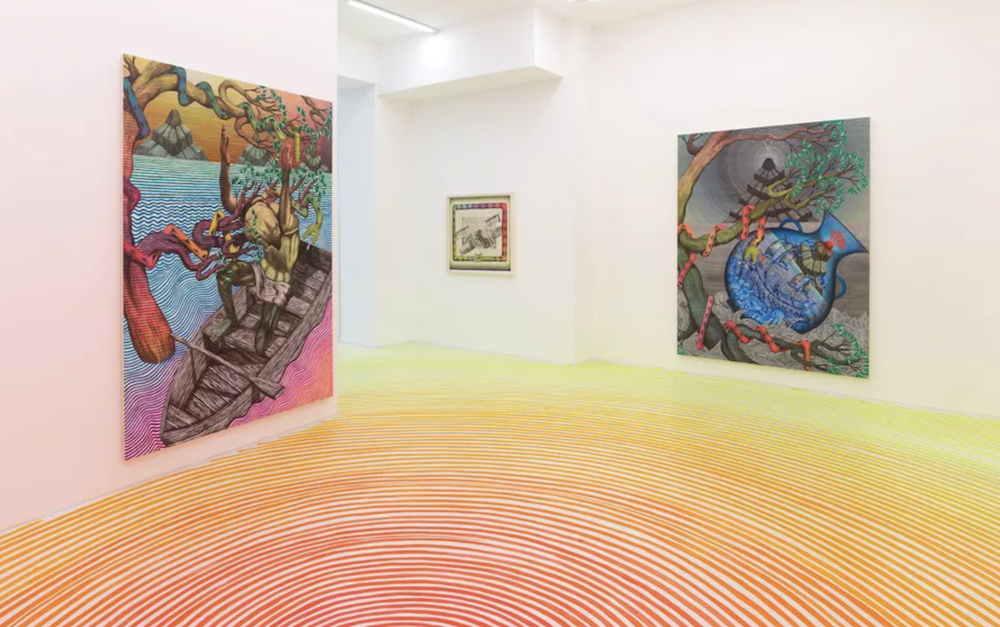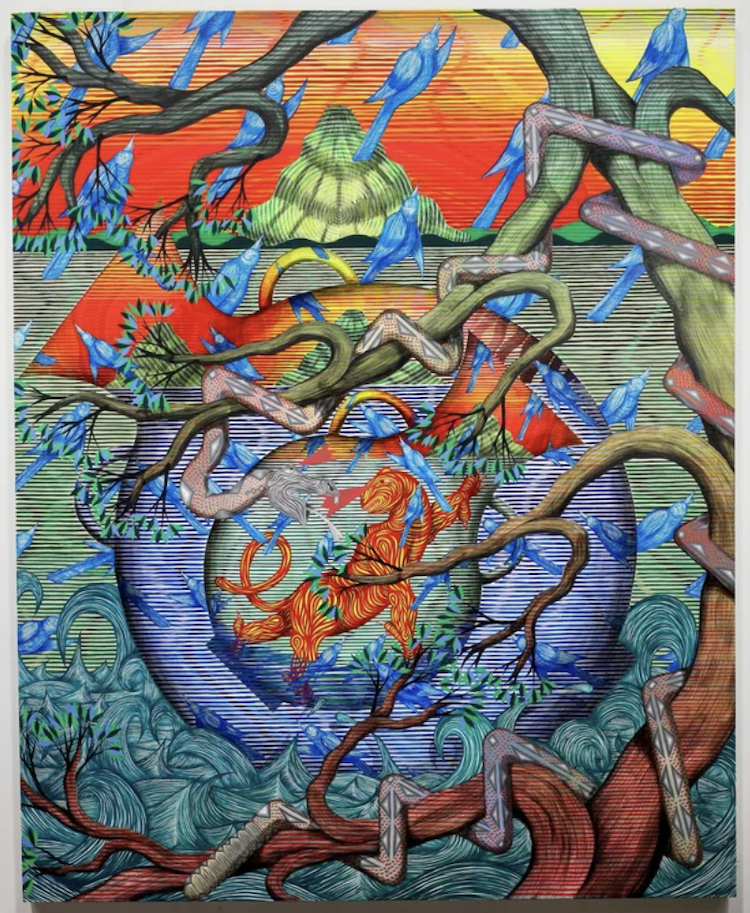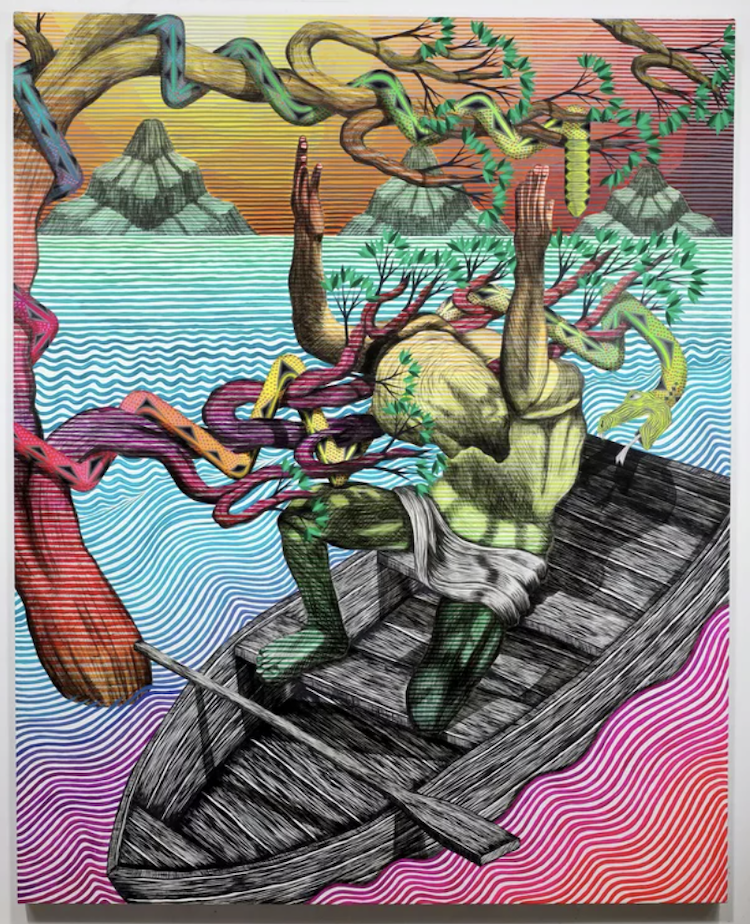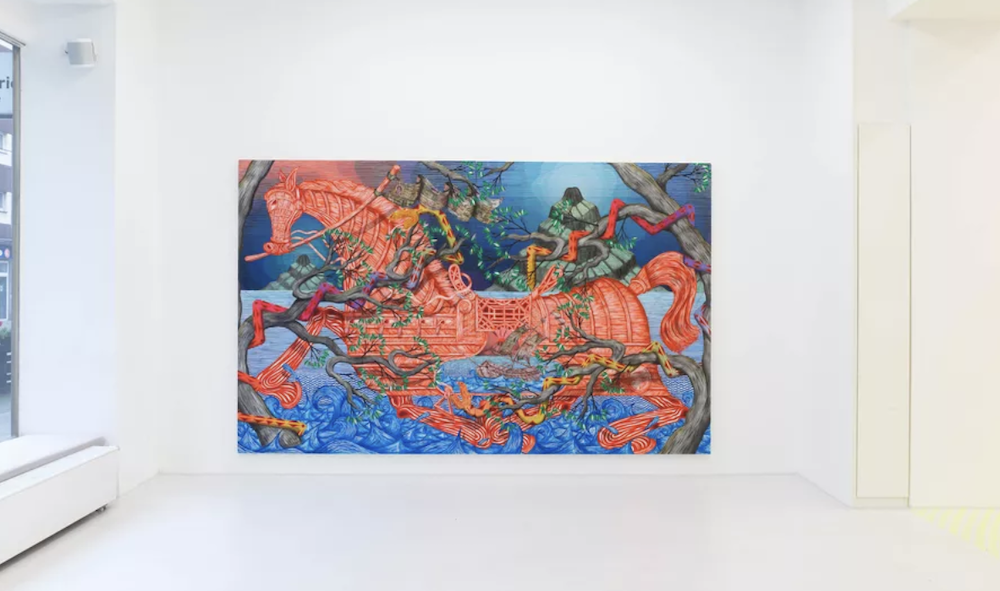Andrew Schoultz is known to international audiences for his repetitive canvas works in which he approaches social and political issues in a painterly way. With his densely layered paintings, Schoultz represents an all-encompassing, historical position in which he explores recurring patterns of behaviour in history in relation to war, natural disasters and globalization. Inspired by underground comics, German cartography, ancient illustrations from Schedel's World Chronicle of 1493 or Persian miniatures, the American artist's works are visually and thematically highly allegorical. They manifestly lack references to individual historical events, but explore a collective restlessness fed by various global affairs. His wide range of historical references illustrates not only Schoultz's interests and influences, but also his idea of illustrating the cyclical nature of secular history through the use and juxtaposition of archaic and modern symbols, as well as iconography.
This serpentine sunset, as the title of the exhibition suggests, is an invitation to almost meditative contemplation. The artist's colorful but never saturated style, sometimes verging on the psychedelic, draws visitors into a world where legendary and social mythology mingle. The extremely attractive color and meticulously interwoven lines encourage a complete visual analysis of the artist's work. We dive in, sometimes drowning, as if in a great whirlpool, and emerge from this reading full of aesthetic and societal information. The repetitive nature of the circular, the recurrence of the opposing tones of orange and blue, and the impression of movement created by the characteristic cross-hatching - reminiscent of Aboriginal art in the notion of accumulation - give rise to a kind of grammar and vocabulary that is unique to the artist, and which he uses faithfully while constantly renewing himself.
In his second solo exhibition at Galerie Droste, Serpentine Sunset, Andrew Schoultz presents new works on canvas that complement his cycle of works, but in their figurativeness herald a new phase of creativity.



